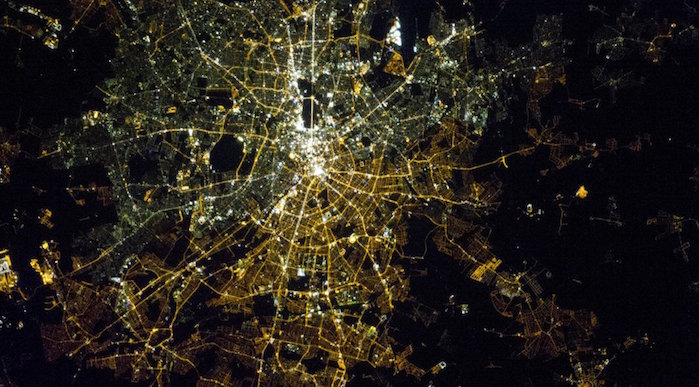A report released by the American Medical Association (AMA) Council on Science and Public Health has confirmed what’s long been suspected in the health and wellness community—that light emitting diodes (LEDs) which emit excessive amounts of blue light can have an adverse impact on human health and the environment.

The report, entitled “Human and Environmental Effects of Light Emitting Diode Community Lighting,” and unanimously approved by representatives of the Association’s entire membership, presents multiple consequences that will result from the world transitioning over to LEDs as the preferred source for outdoor lighting.
Many of these implications were first raised by the International Dark-Sky Association (IDA) a half-decade ago; this marks the first time they’ve been formally acknowledged by the Association.
“The AMA's study not only provides additional rigorous scientific evidence to buttress IDA's longstanding efforts to raise awareness of the potential hazards of blue-rich light, but also speaks to the bold leadership that the medical community has consistently demonstrated on this critical human health and environmental issue,” said J. Scott Feierabend, Executive Director of the IDA.
This is not to say the AMA outright rejects the use of LED lighting as a whole; in fact, it actually supports the technology’s use as a means for reducing energy consumption and fossil fuel dependency. Instead, the report identifies certain LED types that are harmful, and cites a growing body of scientific evidence proving exposure to blue-rich white light at night leads to increased risks for cancer, diabetes, and cardiovascular disease.
Specifically, the issue focuses on blue-rich white LED street lighting. According to the report, this type of light is five times more disruptive to a human’s sleep cycle than conventional street lighting, and it’s becoming an increasingly prevalent problem. Recent surveys have documented brighter nighttime lighting in rural areas; this, in turn, leads to locals experiencing reduced sleep, impaired daytime functioning, and a greater chance of obesity.
To circumvent these issues, the AMA encourages better attention be paid to designing and engineering these technologies. This includes requiring properly shielded outdoor lighting, incorporating adaptive controls that either dim or turn off light at night, and limiting the correlated color temperature of all outdoor lighting to 3000 Kelvin or less.
The report also outlines the detrimental effects of blue-rich LED lighting beyond humans.
“Other species are just as vulnerable to disruption of their circadian rhythms as are humans, and often more so,” noted Travis Longcore, Ph.D., Assistant Professor of Architecture, Spatial Sciences, and Biological Sciences at the University of Southern California. “Those impacts and others can be reduced by limiting blue-light emissions. Policy makers, government officials, and the American public now have the science and the imprimatur of the AMA to insist that LED installations be designed to reduce impacts on wildlife and human health.”
One thing worth pointing out about this report is that it marks the first time the AMA has focused solely on the effects of LED lighting. In 2009, the Association unanimously adopted a resolution that endorsed the use of fully shielded street lighting to minimize nighttime glare; in 2012, it released a report that expanded its position on glare, and the impact that light at night can have on a human’s overall health and well-being.
“The AMA has a long history and strong record of developing sound, science-based policy on lighting and human health, and adoption of these guidelines builds on that tradition,” explained Dr. Mario Motto, report coauthor and former IDA board member, and past president of the Massachusetts Medical Society. “Our hope is that municipalities will use the report's guidelines when considering the adoption of LED street lighting, making their communities safer for both humans and wildlife.”
Richard Stevens, Ph.D., a cancer epidemiologist at the University of Connecticut School of Medicine and coauthor of the report, notes the importance of when this report is being released. “This is a timely and important policy statement by the AMA,” he explains. “As with most new technology, everyone is enamored at first because it's so great and does so much for us, but the downsides eventually become apparent. Electric light has great attributes, but we now realize, when poorly used and abused, there are also many problems.”
To learn more, read the report in its entirety: Human and Environmental Effects of Light Emitting Diode Community Lighting.
Via DarkSky.org
Advertisement
Learn more about Electronic Products Magazine





